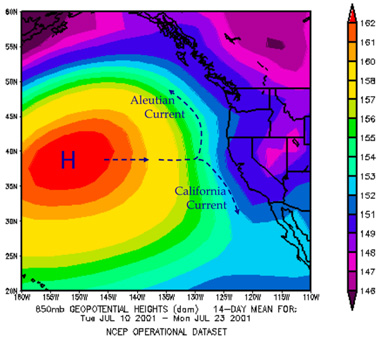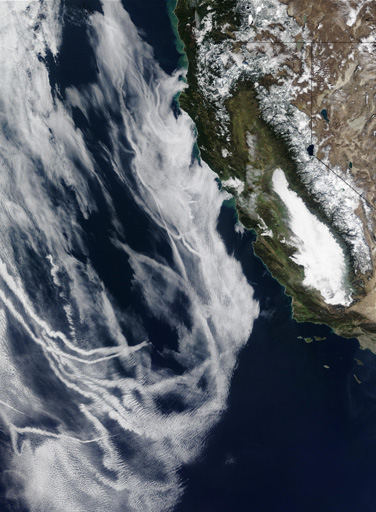
During the summertime dominant synoptic high pressure regions rise to the midlatitudes over the eastern basins of the world’s oceans. These blocking highs are responsible for the stark lack of precipitation on the neighboring continents, strong subsidence inversions on their leeward side, as well as strong equatorward surface ocean currents and pulsed upwelling caused by Ekman pumping along the coastline. The currents engendered by these semipermanent highs are the California Current (Pacific High), Canary Current (Azores High) in the Northern Hemisphere and the Peru/Humboldt, Benguela, and West Australian currents in the Southern Hemisphere. The resultant deepwater upwelling supplies nutrients to the surface waters and promotes great phytoplankton blooms that enhance the local food web to such an extent that approximately 50% of the world’s fish catch comes from these few Eastern ocean basin upwelling regions.
The strong synoptic subsidence warming in the lower troposphere in this region, coupled with the cold deepwater from the upwelling creates very strong atmospheric inversions that serve to rigidly cap the prevalent subtropical marine stratocumulus (Sc). These clouds have engendered considerable scientific inquiry due to their importance in the Earth’s energy budget. Relative to the ocean below, the expansive stratocumulus sheets reflect shortwave radiation much more effectively while radiating at temperatures not much cooler, thus making the climate quite sensitive to their presence. The satellite image shows the variability of the stratocumulus off the coast of California and ship tracks streaking through the low level clouds caused by soluble combustion products (e.g. SO42-).
